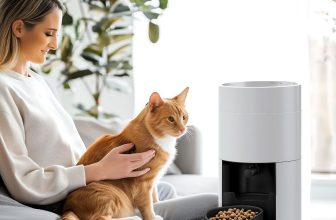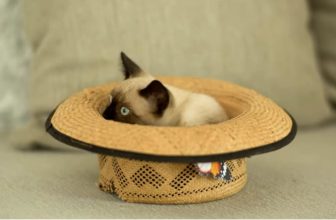What Food Should Cats Eat? Healthy Choices Guide
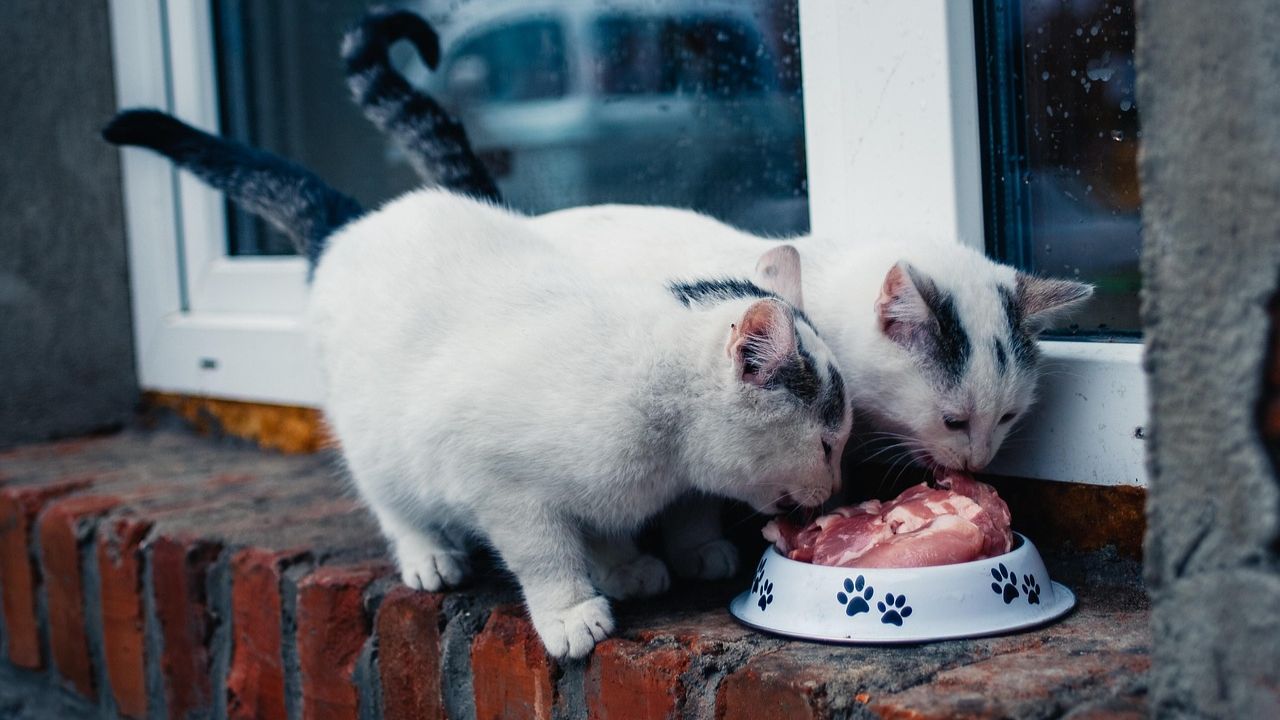
Cats need a balanced diet to stay healthy. They require specific nutrients. Knowing what food should cats eat is crucial for their well-being. Cats are obligate carnivores, which means they thrive on meat. Their bodies are designed to extract nutrients from animal proteins. Feeding them the right food is vital for their growth, energy, and overall health.
A proper diet can prevent health issues like obesity and diabetes. Many pet owners wonder what food is best for their feline friends. It’s important to provide them with a mix of wet and dry food, ensuring they get enough moisture and essential nutrients. Understanding their dietary needs helps in choosing the right food. Let’s explore the best options to keep your cat happy and healthy.
Essential Nutrients
Cats are unique creatures with specific dietary needs. Understanding what food cats should eat is crucial for their health. Essential nutrients play a significant role in a cat’s diet. These nutrients keep them active and healthy. A well-balanced diet ensures they have a long life. The main nutrients cats require are proteins, fats, and carbohydrates. Each of these nutrients serves a different purpose. Let’s explore these essential nutrients further.
Proteins
Proteins are vital for cats. They provide energy and support growth. Cats are obligate carnivores. This means they need meat to thrive. Proteins are mainly found in animal sources like chicken, beef, and fish. They help build and repair tissues. They also support a healthy immune system.
A cat’s diet should be rich in protein. Here are some protein sources:
- Chicken – Easily digestible and lean.
- Fish – Provides essential omega-3 fatty acids.
- Beef – Rich in iron and zinc.
Amino acids are the building blocks of proteins. Cats need specific amino acids like taurine. Taurine is found in animal tissues. Without it, cats can suffer from heart and vision problems. Always ensure your cat’s diet includes enough protein.
Fats
Fats provide energy and flavor. They are essential for a cat’s diet. Fats support healthy skin and coat. They also aid in the absorption of vitamins. Cats get fats from both animal and plant sources. The most important fats for cats are omega-3 and omega-6 fatty acids.
Here is a simple table of fat sources and their benefits:
| Fat Source | Benefits |
|---|---|
| Fish Oil | Supports brain and eye health. |
| Chicken Fat | Enhances taste and provides energy. |
| Flaxseed Oil | Offers omega-3 fatty acids. |
Always include a good amount of fats in your cat’s diet. This ensures they stay energetic and healthy. But avoid giving too much. Excess fats can lead to weight gain.
Carbohydrates
Carbohydrates are not essential for cats. But they can provide energy. Cats do not need carbs like humans do. Yet, they can digest them in small amounts. Carbs are found in grains, vegetables, and fruits. They should not be the main part of a cat’s diet. Too many carbs can lead to obesity.
Here are some safe carbohydrate sources for cats:
- Rice – Easy to digest and provides energy.
- Pumpkin – Aids digestion and is low in calories.
- Sweet Potatoes – Rich in fiber and vitamins.
Always monitor the carb intake in your cat’s diet. Ensure proteins and fats remain the primary nutrients. Proper balance is key to a healthy feline diet.

Commercial Cat Food Types
Cats are unique animals with specific dietary needs. Feeding them the right food is crucial for their health and well-being. Understanding the types of commercial cat food can help you make better choices. There are three main types: dry food, wet food, and raw diets. Each type has its pros and cons. Let’s explore these options to find out what’s best for your feline friend.
Dry Food
Dry food, also known as kibble, is a popular choice for many cat owners. It is convenient and easy to store. Dry food typically has a longer shelf life compared to other types. This makes it ideal for busy households. Here are some benefits and drawbacks of dry food:
- Affordable: Usually less expensive than wet food.
- Convenient: Easy to measure and serve.
- Dental Health: Can help reduce tartar buildup.
- Low Moisture: May not provide enough water for some cats.
Dry food may lack moisture, which is essential for cats. Some cats may not drink enough water. This can lead to urinary issues. To avoid this, ensure your cat has access to fresh water always. Choosing a high-quality dry food is important. Look for brands with named meat ingredients and avoid fillers.
Wet Food
Wet food is another popular option for cat owners. It comes in cans or pouches and is rich in moisture. This type of food can be more appealing to cats. Here are some benefits and drawbacks of wet food:
- High Moisture Content: Keeps your cat hydrated.
- Flavorful: Often more palatable for picky eaters.
- Soft Texture: Suitable for older cats or those with dental issues.
- Cost: Generally more expensive than dry food.
Wet food can aid in weight management. It helps cats feel fuller with fewer calories. This is beneficial for overweight cats. It is essential to store opened cans properly. This prevents spoilage and maintains freshness. Choosing a variety with high-quality ingredients is important for your cat’s health.
Raw Diet
A raw diet consists of uncooked meats, organs, and bones. Some owners believe it mimics a cat’s natural diet. Here are some benefits and drawbacks of a raw diet:
- Natural Ingredients: Contains whole, unprocessed foods.
- High Protein Content: Supports lean muscle mass.
- Customizable: Can be tailored to your cat’s needs.
- Preparation and Safety: Requires careful handling to prevent contamination.
Preparing a raw diet can be time-consuming. It needs careful planning to ensure nutritional balance. Cats need specific nutrients like taurine, which must be present in the diet. Consulting with a vet is crucial before starting a raw diet. This ensures your cat receives a balanced and safe diet.
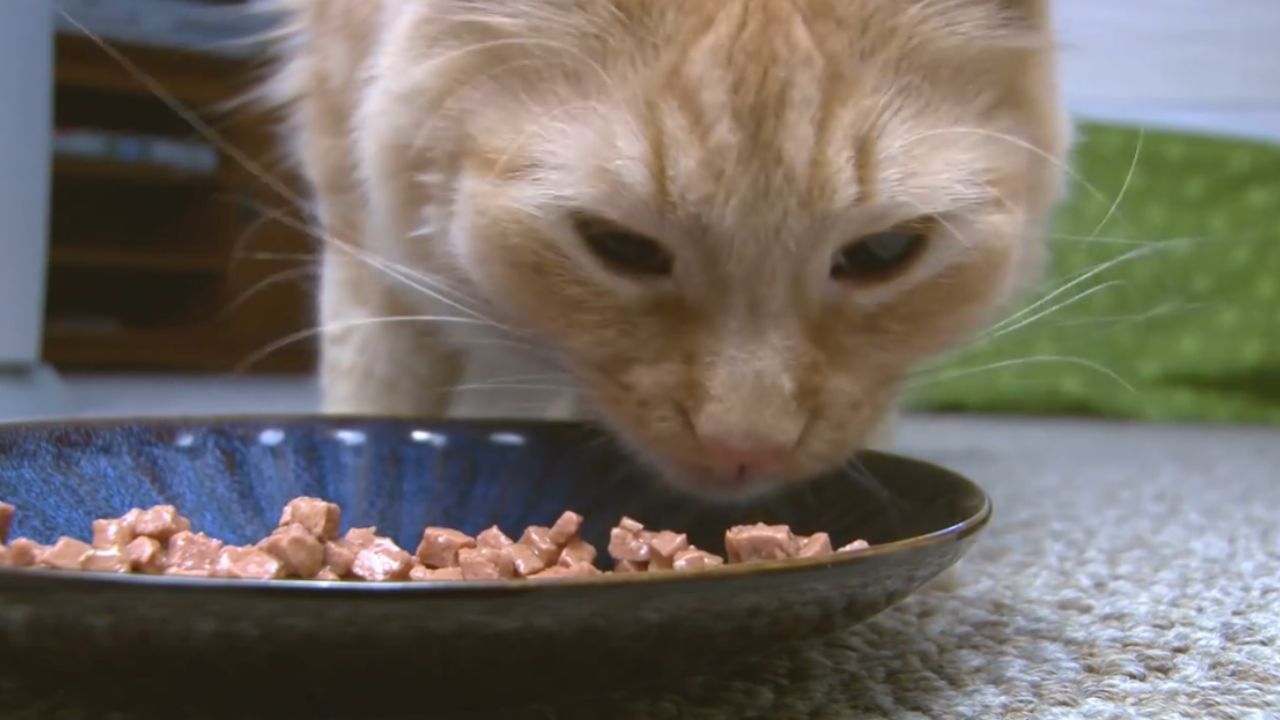
Homemade Cat Meals
Cats are beloved members of many families. Ensuring they eat the right food is essential for their health. Homemade cat meals can be a great option. They allow you to control the ingredients. You can ensure your cat is eating fresh and nutritious food. Many cat owners are now interested in making meals at home. It’s important to know what ingredients are safe and suitable for cats. Proper recipes can help maintain your cat’s health and happiness.
Safe Ingredients
Choosing safe ingredients for homemade cat meals is crucial. Cats have different nutritional needs compared to humans. Protein is a significant part of a cat’s diet. It should be the main ingredient in their meals. Chicken, turkey, and beef are good sources of protein. Fish like salmon and tuna are also great options. However, avoid feeding raw fish regularly.
Some ingredients should be used with caution. Onions and garlic are toxic to cats. Grapes and raisins should also be avoided. Here are some safe ingredients:
- Cooked eggs
- Plain rice
- Sweet potatoes
- Peas
- Spinach
It’s important to ensure ingredients are cooked properly. Raw foods can contain harmful bacteria. Always remove bones from meat to prevent choking hazards. Freshness is key. Fresh ingredients ensure your cat gets the best nutrients.
Recipe Ideas
Creating homemade meals can be simple and rewarding. Here are a few ideas to get started:
- Chicken and Rice Mix: Cook chicken thoroughly. Mix with plain rice. Add some peas for extra nutrition.
- Fish Delight: Bake salmon until cooked. Add sweet potatoes. Mash together for a tasty meal.
- Turkey and Spinach Stew: Cook turkey and spinach together. Add a small amount of water to create a stew.
These recipes can be adjusted based on your cat’s preferences. Always introduce new foods slowly. Monitor your cat for any allergic reactions. Variety is essential. It ensures your cat gets a balanced diet. Try rotating different recipes weekly. This keeps meals interesting and nutritious.
Food To Avoid
Cats are curious creatures. They love to explore and sometimes eat things they shouldn’t. Knowing what food is safe for your cat is very important. Some foods can be toxic or harmful. Understanding what to avoid helps keep your cat healthy. This guide covers foods that cats should avoid, focusing on toxic and human foods.
Toxic Foods
Certain foods are very harmful to cats. These can cause serious health issues. It’s crucial to be aware of these toxic foods:
- Onions and Garlic: These can damage a cat’s red blood cells.
- Chocolate: Contains theobromine, which is toxic to cats.
- Grapes and Raisins: Can cause kidney failure.
- Alcohol: Even small amounts can lead to severe poisoning.
- Caffeine: Found in coffee, tea, and soda, it’s harmful to cats.
Always check what’s in your cat’s food. Some ingredients may not be safe. Keep toxic foods away from their reach. If your cat consumes any of these, contact a vet immediately.
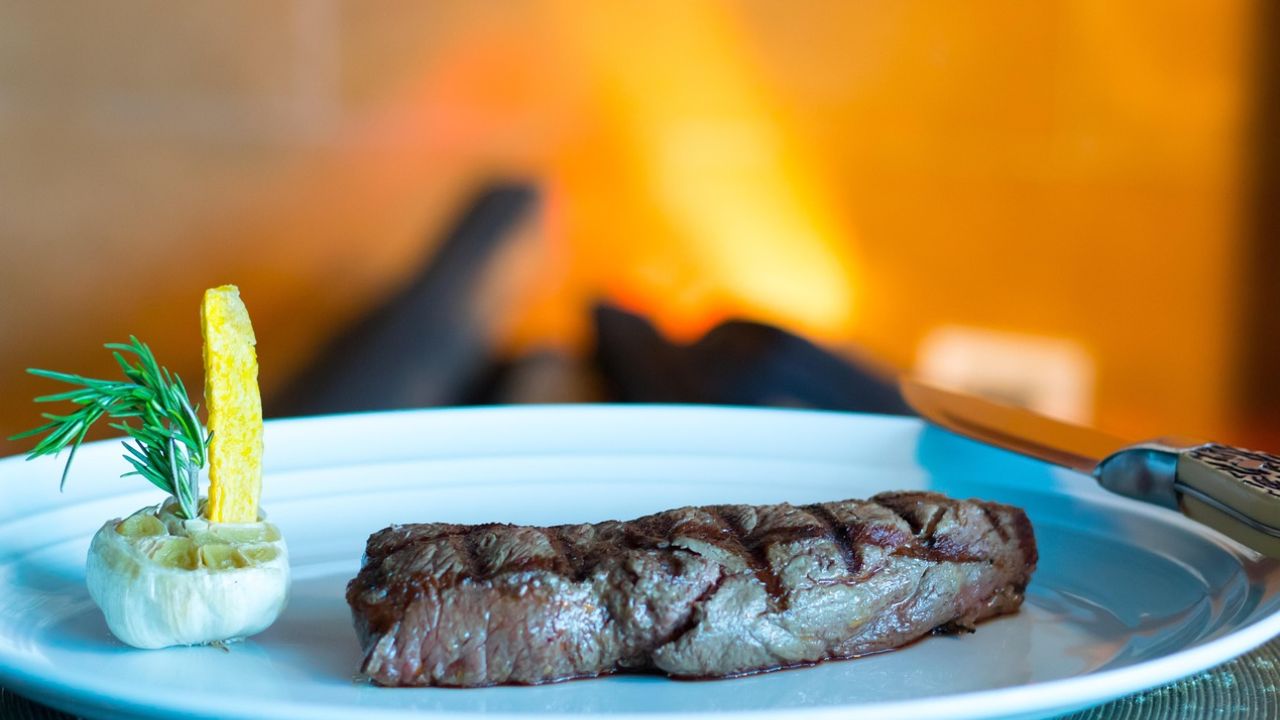
Human Foods
Many human foods can upset a cat’s stomach. They are not suitable for feline digestion. Here are some common human foods to avoid:
- Dairy Products: Most cats are lactose intolerant. Milk can cause digestive issues.
- Raw Eggs: Risk of bacteria like Salmonella. Also contains avidin, which affects vitamin absorption.
- Raw Fish: Can lead to thiamine deficiency, causing neurological issues.
- Fat Trimmings: Can cause pancreatitis.
- Processed Foods: Often contain salt and sugar, which are bad for cats.
Always offer cat-specific food. It provides the nutrition they need. Avoid feeding them from your plate. Human foods can cause health problems.
Age-appropriate Diets
Understanding what food cats should eat is crucial for their health. Cats have unique dietary needs based on their age. Providing an age-appropriate diet ensures they get the right nutrients. Young kittens, active adults, and aging seniors all have different requirements. This guide will help you choose the best food for your cat’s life stage.
Kittens
Kittens need a diet rich in protein and calories. They grow rapidly and require extra energy and nutrients. Here are some important elements of a kitten’s diet:
- High-Quality Protein: Essential for muscle and tissue development.
- Healthy Fats: Support brain development and provide energy.
- Calcium and Phosphorus: Important for strong bones and teeth.
- Vitamins and Minerals are necessary for overall health and immunity.
Feeding frequency is also crucial. Kittens should eat small meals several times a day. This approach helps support their fast metabolism. Choose foods labeled specifically for kittens. These options usually meet all their dietary needs. Always ensure fresh water is available.
Adults
Adult cats have different nutritional needs compared to kittens. They require balanced nutrition to maintain a healthy weight and energy level. Here’s what to focus on for adult cats:
- Balanced Protein: Helps maintain muscle mass and energy.
- Moderate Fats: Provide energy, but should be controlled to prevent obesity.
- Carbohydrates: A Limited amount is needed for energy.
- Fiber: Aids digestion and prevents hairballs.
Adult cats typically eat two meals a day. Choose high-quality commercial cat food or consult a vet for homemade options. Monitor your cat’s weight and adjust portion sizes as needed. Regular vet check-ups are important for maintaining health.
Seniors
Senior cats often have special dietary needs. Aging affects their metabolism, digestion, and overall health. Key factors in a senior cat’s diet include:
- Lower Calories: Helps prevent obesity as metabolism slows down.
- High-Quality Protein: Maintains muscle mass, which declines with age.
- Joint Supplements: Ingredients like glucosamine support joint health.
- Easy-to-Digest Ingredients: Helps with sensitive digestion.
Senior cats benefit from smaller, more frequent meals. This helps with digestion and energy management. Choose food labeled for senior cats. These options cater to their specific nutritional needs. Regular vet visits ensure they remain healthy and active.

Special Dietary Needs
Cats are unique creatures with specific dietary needs. Understanding what food they should eat is crucial for their health and well-being. Special Dietary Needs can vary significantly among cats. Some may require tailored diets due to allergies or health conditions. Providing the right food helps them maintain a healthy lifestyle, preventing complications and ensuring they thrive.
Allergies
Cats can suffer from food allergies just like humans. Identifying these allergies is important to prevent discomfort or health issues. Common allergens in cat food include beef, dairy, and fish. Symptoms of food allergies in cats may include:
- Itchy skin
- Excessive grooming
- Vomiting
- Diarrhea
If your cat shows these symptoms, consult a vet. They might suggest an elimination diet. This involves removing suspected allergens from their food. Hypoallergenic diets can also be an option. These diets use ingredients less likely to cause reactions. Natural and limited ingredient foods are often recommended. They contain fewer potential allergens, reducing the risk.
Health Conditions
Some cats have health conditions requiring special diets. These diets support their health and manage symptoms. Diabetes is a common condition in cats. A diet low in carbohydrates and high in protein can help manage it. Kidney disease is another condition. Cats with kidney issues need low-phosphorus diets.
Here’s a brief overview of dietary recommendations for specific conditions:
| Condition | Diet Recommendations |
|---|---|
| Diabetes | High protein, low carbohydrates |
| Kidney Disease | Low phosphorus, reduced protein |
| Obesity | Low calorie, high fiber |
Consulting with a veterinarian is crucial. They will guide you on the best diet for your cat’s specific health condition. Proper dietary management can improve their quality of life.
Feeding Guidelines
Cats are known for their independent nature, but feeding them requires careful attention. Choosing the right food is crucial for their health and happiness. Cats are obligate carnivores, meaning they need a diet high in protein. Their bodies are designed to digest meat, making it an essential part of their meals. Feeding guidelines help cat owners provide a balanced diet. They ensure cats get the nutrients they need to thrive. Understanding portion sizes and feeding frequency can make a big difference. These elements are key to maintaining a cat’s health and preventing obesity.
Portion Sizes
Portion sizes are important in managing a cat’s diet. Overfeeding can lead to obesity, which can cause health issues. Cats have different needs based on age, activity level, and health. It’s vital to adjust portion sizes according to these factors. Adult cats usually need about 200 to 250 calories per day. This can vary, so consulting a vet is wise. Kittens need more calories for growth. They may require up to 500 calories daily.
A good way to manage portion sizes is by using a measuring cup. This helps ensure consistency in feeding. Avoid free-feeding, which can lead to overeating. Instead, provide specific portions at set times. Use the guidelines on food packaging as a reference. Here’s a simple table for quick reference:
| Cat Type | Calories Per Day |
|---|---|
| Adult Cat | 200-250 |
| Kitten | Up to 500 |
Feeding Frequency
Feeding frequency impacts a cat’s digestion and energy levels. Cats prefer small, frequent meals. This mimics their natural hunting behavior. Splitting their daily intake into two or three meals can be beneficial. Adult cats typically thrive on two meals a day. This routine supports their metabolism and keeps them active.
Kittens require more frequent feeding. They have higher energy needs. Feeding them three to four times a day is advisable. This supports their growth and development. Consider a schedule that fits your lifestyle and your cat’s needs. Consistency is key to a healthy feeding routine. Stick to regular feeding times. This helps cats know when to expect their meals. It also reduces stress and keeps them satisfied.
Balancing feeding frequency with portion sizes ensures cats remain healthy. It’s essential to monitor their weight and adjust as needed. Regular visits to the vet can help track their progress.
Hydration Importance
Cats are unique creatures with specific dietary needs. Understanding what food cats should eat is essential for their health and happiness. Cats are obligate carnivores, meaning they rely on nutrients found in animal flesh. But apart from protein, hydration is crucial for their well-being. Cats often don’t drink enough water, so their diet should help keep them hydrated. The right balance of food and water ensures they stay healthy and active.
Water Sources
Water is vital for cats. They need it to support their kidneys and overall health. Cats often get water from their food, especially if they eat wet cat food. Wet food contains a high percentage of water, helping keep them hydrated. Dry cat food has less water content. So, if your cat eats mostly dry food, ensure they drink enough water separately.
Here are some ways to ensure your cat gets enough water:
- Provide fresh water daily. Cats prefer clean and fresh water. Change their water bowl every day.
- Use multiple water bowls. Place them in different areas of your home. This encourages cats to drink more.
- Consider a cat water fountain. Many cats enjoy drinking from flowing water.
- Add water to their food. Mixing a little water into their food can increase their water intake.
These methods can help improve your cat’s hydration, ensuring they remain healthy and active.
Signs Of Dehydration
Dehydration in cats can lead to serious health issues. Recognizing the signs early can prevent complications. Some common signs of dehydration include:
- Dry gums and mouth. Check your cat’s gums; they should be moist.
- Loss of skin elasticity. Gently pull the skin on their back; it should return quickly.
- Sunken eyes. Eyes may appear dull or sunken.
- Lethargy and weakness. Dehydrated cats might appear tired or weak.
If you notice these signs, offer water immediately. Consult a vet if symptoms persist. Dehydration can be serious, so timely action is crucial.
Frequently Asked Questions: What Food Should Cats Eat
What Is The Best Food To Feed Your Cat?
Feed your cat high-quality, balanced commercial cat food. Choose options rich in protein, vitamins, and minerals. Include wet and dry food varieties to support hydration and dental health. Always consult your vet to tailor the diet to your cat’s specific needs and health conditions.
What Do Cats Need To Eat Daily?
Cats need a balanced diet of protein, fats, and vitamins. Include high-quality meat-based cat food. Ensure they have fresh water daily. Consider occasional treats and supplements as advised by a vet.
What Is The 25 Rule For Cat Food?
The 25% rule for cat food means the product must contain at least 25% of the named ingredient. This rule applies when terms like “dinner,” “entrée,” or “platter” are used. This ensures a substantial amount of the named ingredient in the cat food.
What Is The Healthiest Food For An Indoor Cat?
The healthiest food for an indoor cat is high-quality, protein-rich cat food. Choose brands with real meat as the primary ingredient. Ensure the food contains essential nutrients like taurine for heart health. Avoid fillers and artificial additives to maintain optimal nutrition and weight control. Consult a vet for personalized advice.
What Is The Best Diet For Indoor Cats?
Indoor cats often benefit from a balanced diet with high protein and low carbohydrates. It helps maintain their health.
Conclusion
Choosing the right food for your cat is essential. Their health depends on it. Focus on balanced meals. Include proteins, fats, and essential nutrients. Cats need fresh water always. Avoid foods harmful to them. Chocolate, onions, and grapes are dangerous.
Consult a vet for personalized advice. Each cat is unique. Their diet should match their needs. Take time to understand your cat’s preferences. Their happiness matters too. Proper nutrition leads to a healthy, happy cat. Keep learning about cat nutrition.
Your furry friend deserves the best care. Remember, a healthy diet means a longer, joyful life for your cat.




